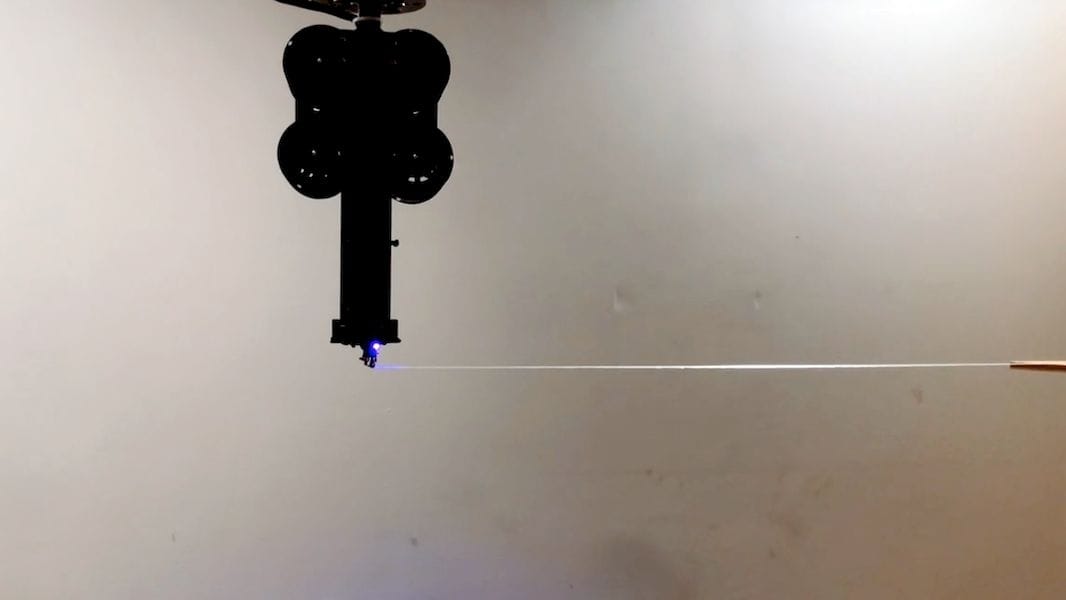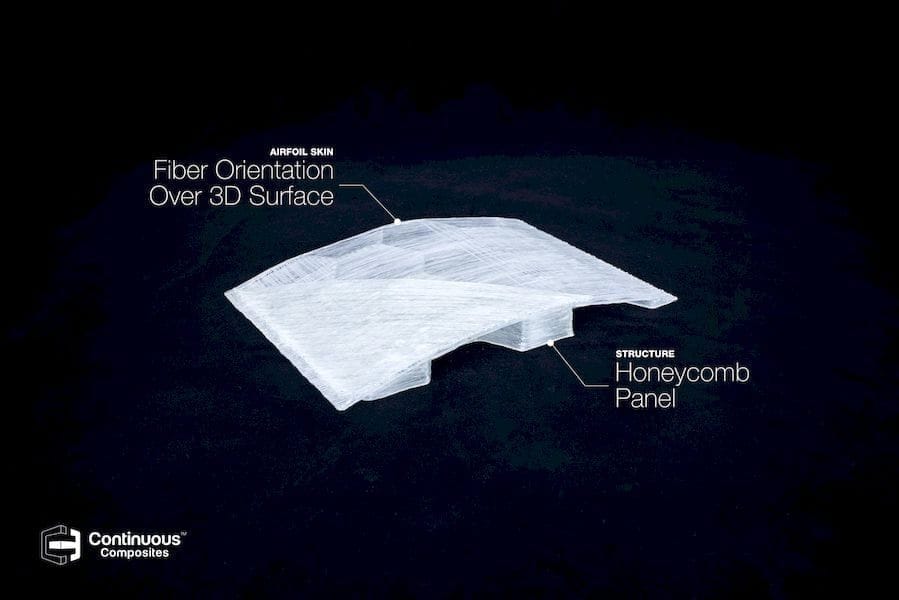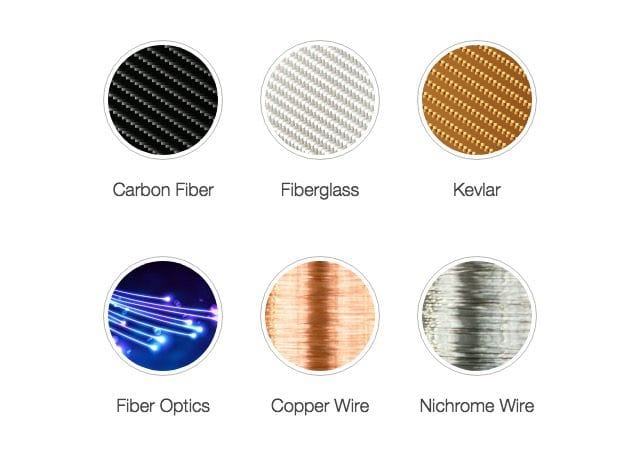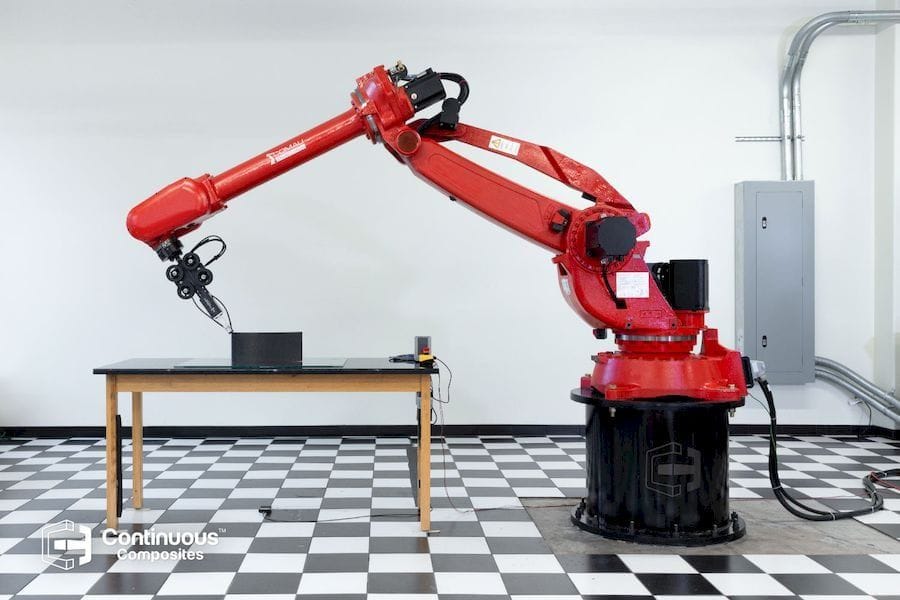
We’re looking at the technology of Continuous Composites today.
Continuous Composites is a company that’s been working on a rather different process for 3D printing that should prove extremely attractive for certain types of manufacturing. Their process’s key feature is the ability to include continuous strands of strong fibers within the print.
That’s not a feature exclusive to them; Markforged has made quite a business from that capability on their equipment, which began as a desktop device capable of laying down strands of carbon fiber within an otherwise normal nylon 3D print. Their business grew because 3D printer operators wanted the strength of those nylon / carbon fiber parts.
But what Continuous Composites does is a bit different.
Whereas Markforged designed their system around a conventional 3D printer with an added ability to lay fiber, Continuous Composites uses a robotic arm paradigm for the mechanicals. Their toolhead is carried through 3D space freely by robotic motion.
And another key difference is the manner of deposition. While Markforged uses the standard hotend / filament approach, Continuous Composites uses a resin system.
Yes, resin! The resin is carefully pushed out of the toolhead, where it immediately encounters a strong UV light source, solidifying it immediately. Continuous Composites says this actually allows them to 3D print freely in 3D space, as you can see in this image of a rather long bridging movement:

Another interesting difference between Continuous Composites and Markforged is their marketing approach. Markforged appears as a kind of “super 3D printer” because of the fiber capability, but Continuous Composites seems to portray the image of a “super composite system”, as they are directly addressing the needs of those building with composites.

It’s interesting to note that many of their sample print images are very 2D-like parts, like one would form by laying fiber mats down as in traditional composite layup work, but with added features like struts or inner honeycomb structures that would be impossible in traditional approaches. Few of their samples are block, “3D” style objects you so often see as test prints on other 3D printers. I think this tells us a lot about where they believe their target market will be.
And it makes much sense: someone making, say, a wing, might be thrilled to see they can include inner structures that they could never achieve otherwise.
The free-space resin printing approach has not really been used widely by other 3D printer manufacturers, I think because it has limitations of resolution. Indeed, many of the sample prints by Continuous Composites seem pretty coarse. However, that may not be a big deal for the market they’ve selected, as the prints will typically be large and thus resolution is less of an issue and parts can be finished after printing in various ways.
Another very powerful feature is their ability to produce objects with many different types of fiber. Here we see a chart of the types of materials “they’ve been working with”:

This suggests that the system is sufficiently flexible to accommodate other types of fibers not yet listed. I would imagine any flexible wire-like material might be attempted on this system, with the possible exception of al dente spaghetti.
This ability could lead to some interesting developments. If you could include electrical wiring in a component, for example, you save even more weight because you require no fittings to hold post-print wiring.
The nichrome wire ability is of particular interest because you can then heat the object. One potential application for that capability might be automatically de-icing aircraft wings, for example.
The Idaho-based company has been at this for quite a few years, with patents extending back until at least 2012. However, it seems they are still building up the company as they are “seeking OEM customers and collaborators in the fields of engineering, materials, software, robotics and machine tool manufacturers.”
It’s not clear to me whether the product is finished and ready for production, at least from the information on their website. But when it is, I expect a premium price for the system, not the least because it will require a sophisticated robotic arm.
Via Continuous Composites (Hat tip to Julian)

